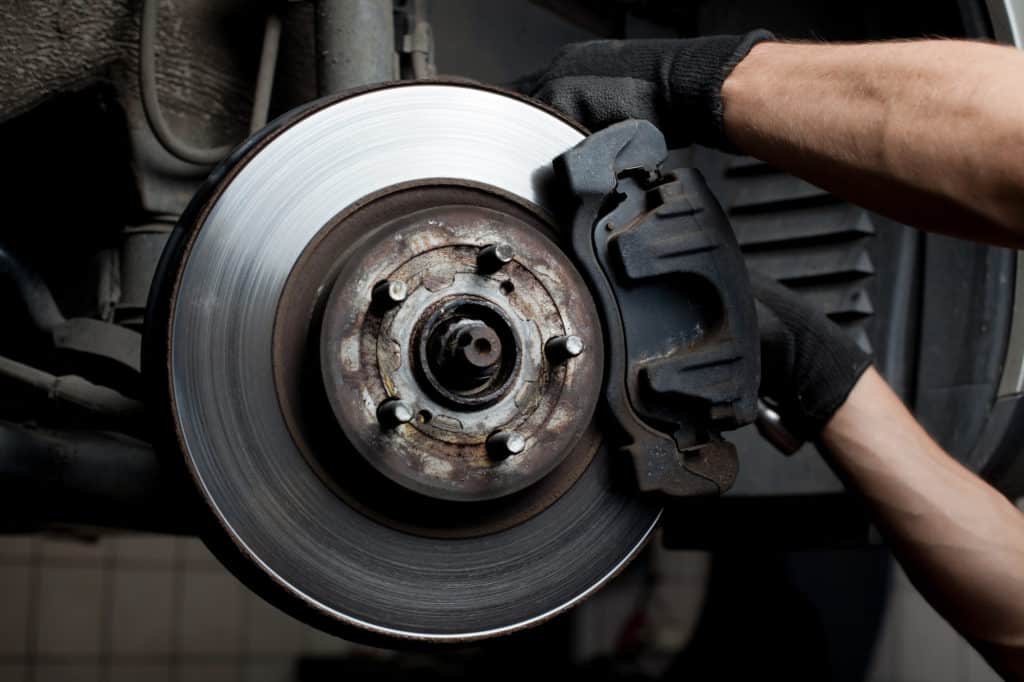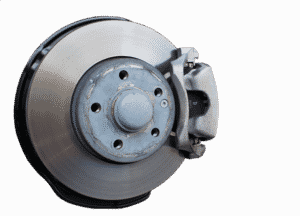When it comes to the types of brake pads on your car, the general-rule-of-thumb is to never skimp on quality.
They play a crucial role in the function of your car and work to control wheel spinning speed when you need to slow your car down.
As such, brake pads should not be driven past their use-by date, which is generally between 2-3 years for most types of brake pads.
Their wear and tear does depend on your driving style though. In order to maintain your brake pads, a check-up once every 6 months is recommended. You don’t want to shell out the cost of replacing brake pads if you don’t have to!
Want to learn more about the different types of brake pads? Read on!
Here’s what you need to know about the different types of brake pads on the market today and their pros and cons.

Understanding Different Types of Brake Pads
With all the different types of cars on the market, there comes with that a myriad of brake formations.
But depending on the type of car, brake pads can lean towards the more expensive or affordable range.
If a car is built for speed and performance, it’s likely that the brake pads will be on the more expensive side.
Regular cars which most people use throughout their day-to-day lives feature brake pads of the more affordable range.
With this in mind, let’s take a closer look at the different types of brake pads most commonly found today:
1. Semi-Metallic
These are among the most popular types of brake pads found in most cars manufactured today. Made from up to 65% metal, they are highly durable, long-lasting and efficient.
The metal content of semi-metallic brake pads can range from 30-65%. This metal is usually combined with other materials such as graphite, copper or steel wire wool.
The combination of materials works to keep heat transfer low, ensuring friction and corrosion is kept to a minimum.
To sum up the pros: semi-metallic brake pads offer a great heat transfer capability, they’re long-lasting, durable and made from robust materials.
Some of the negatives? These brake pads produce more brake dust and noise than organic pads.
2. Organic
Organic brake pads are comprised of a number of different materials, including different fibers and resins. These materials offer excellent heat-resistant capabilities.
They are comprised of only 20% metal, therefore these brake pads are softer and produce lower noise and dust levels. This also means they are less hard-wearing on rotor disks.
One of the stand-out negatives? They wear out far faster than other brake pad materials because of their low metal content.
Pro Tip
Make sure your brake fluid is topped up!

3. Ceramic
Hot off the press and one of the newest additions to the range of brake pads on the market is the ceramic brake pad.
Manufactured from ceramic fibers and various non-ferrous fiber materials, they offer the best solution in terms of heat and friction management.
Due to their material content, ceramic brake pads offer much lower noise levels and brake dust than all other brake pad types.
However, ceramic brake pads are not for everyone – they can be extremely pricey and are better suited to high-speed performance cars.
4. Low-Metallic
Low-metallic brake pads are quite similar to organic brake pads in that they are comprised of only 30% metal. In some cases, they are manufactured with as little as 10% metal.
However, other organic materials are added to this mixture, as well as other metals, such as copper.
They tend to create a little more noise and brake dust than their organic counterparts. But in general, they offer a decent heat transfer capability.
These brake pads are generally quite affordable, but one of the main downsides is an increased noise level when compared to organic brake pads.
When is it Necessary to Replace Brake Pads?
Inspecting and changing your brake pads should become second-nature to a car owner. After all, they determine your safety as you drive.
However, it’s not always easy to tell when exactly brake pads definitely need a change. This is highly dependent on your driving style, as mentioned.
There are a few simple indicators to look out for though, as well as a few simple inspections you can make.
Pro Tip Learn more about how Car Brakes Work
Warning Systems
Many modern cars manufactured today are now being fitted with warning systems that brake pads need to be replaced.
A car’s onboard computer and a smart sensor work to notify the driver that brake pads are worn and need attention.
Using simple sensor technology, when brake pads have worn to a certain level, the sensor is activated and warns the driver.
An obvious issue with this is that most affordable or budget-friendly cars are not kitted with a warning system. As such, there are other clues to look out for.
Increased or Unfamiliar Noise
If you’re driving and begin to hear a distinct scraping, screeching or grinding noise when you brake, this is a clear indication they need replacing.
This is a sign that the wear and tear has made its way through to the metal backing plates, meaning you’re hearing metal-on-metal contact.
These new sounds may start off less obvious and increase with wear and tear. Regardless, always do an inspection when you hear new or unfamiliar sounds regarding your brakes.
Braking Vibrations
When it comes to braking harshly, look out for unusual vibrations coming from your wheels. This is a clear sign of work out brake pads or pads which are overheating too quickly.
Either way, you will need to get your brake pads checked as soon as possible!
Visual Checks
If you don’t have time to take your car to a mechanic, you can do a simple brake pad check yourself.
If you look directly through the spokes of your front-drive wheels, you should be able to see the outside brake pad pressed against the metal rotor of your wheel.
If you don’t see much brake pad, this is a sign of wear and tear. Generally, if you notice there is less than 3mm of brake pad present, it’s time for an update!
How to replace brake pads?
If your pads need to be replaced, be sure to check out this video from Chris Fix:
Manage Your Vehicle Diagnostics
Read more about brakes with these guides:
- When To Replace Brake Pads
- Brake Pads Cost
- Different Types Of Brake Pads
- Average Lifetime Of Brake Rotors
- Difference Between DOT 3, DOT 4, And DOT 5.1 Brake Fluid
At Scanner Answers, we offer an informative website packed with reviews and tips on the best diagnostic scanners on the market today.
Along with this, our website offers insight on all things cars- whether it’s different types of brake pads, vehicle lighting or the engine bay.
Take a look at some of the top-rated Bluetooth OBD2 adapters available today.